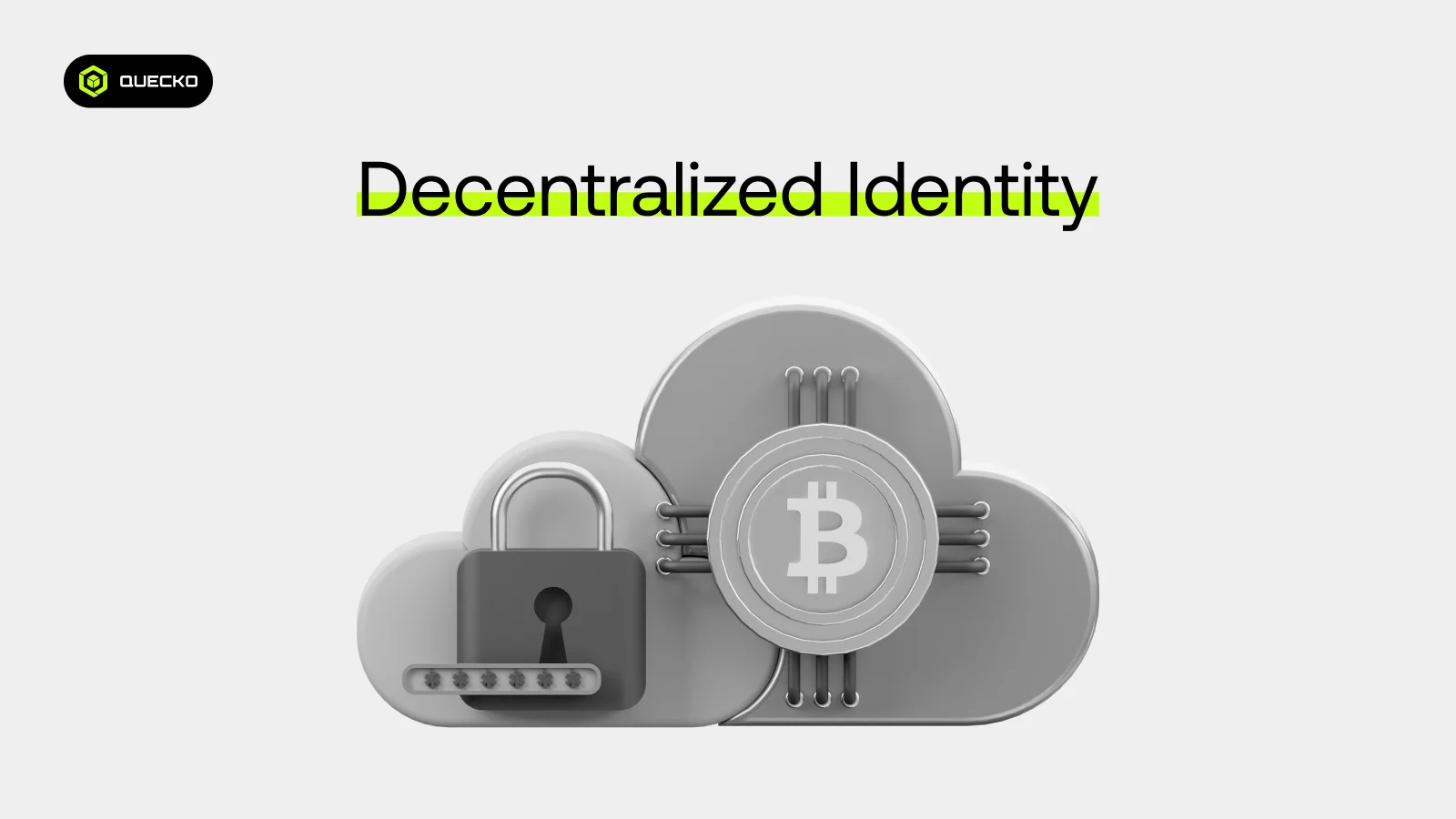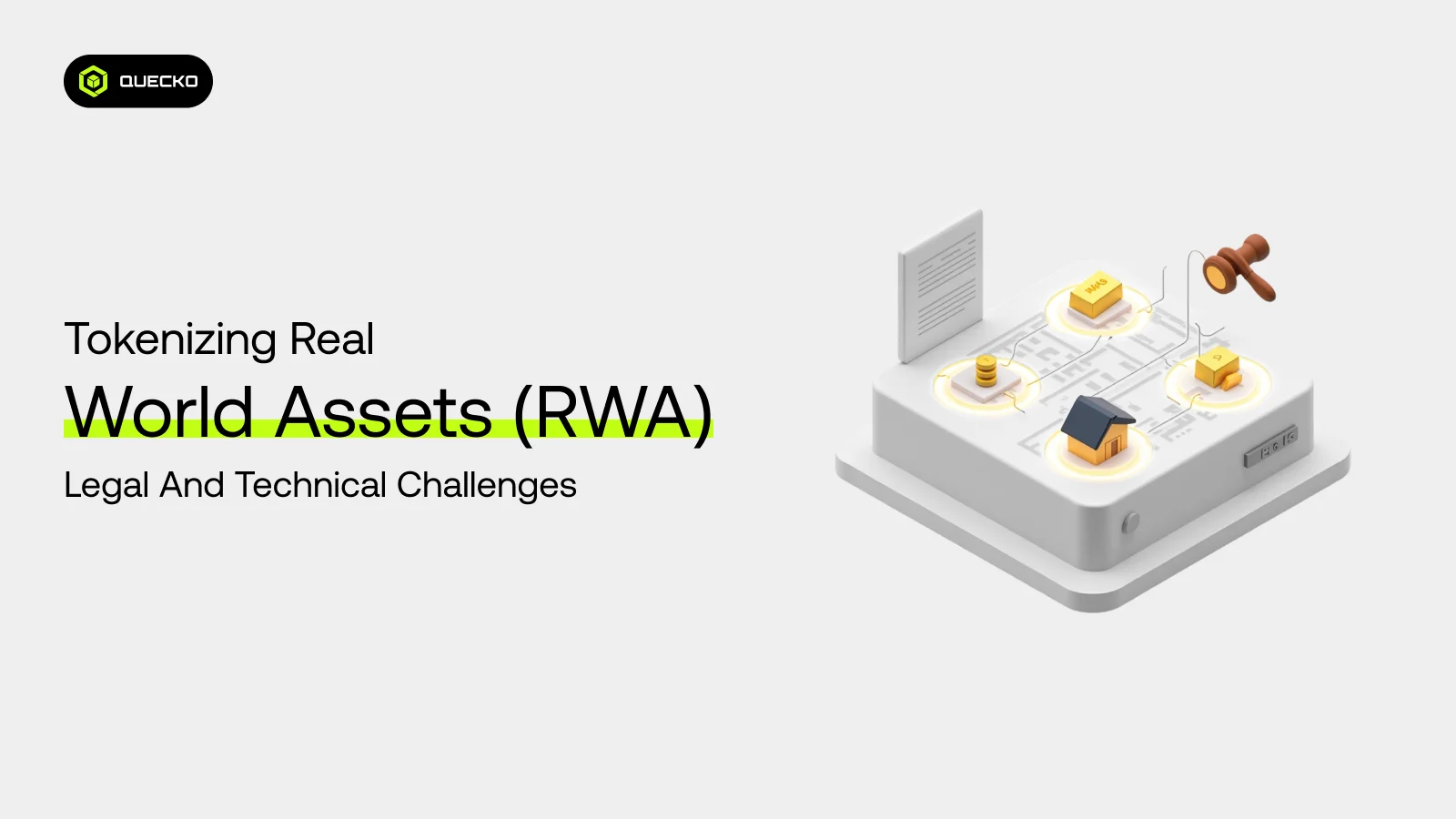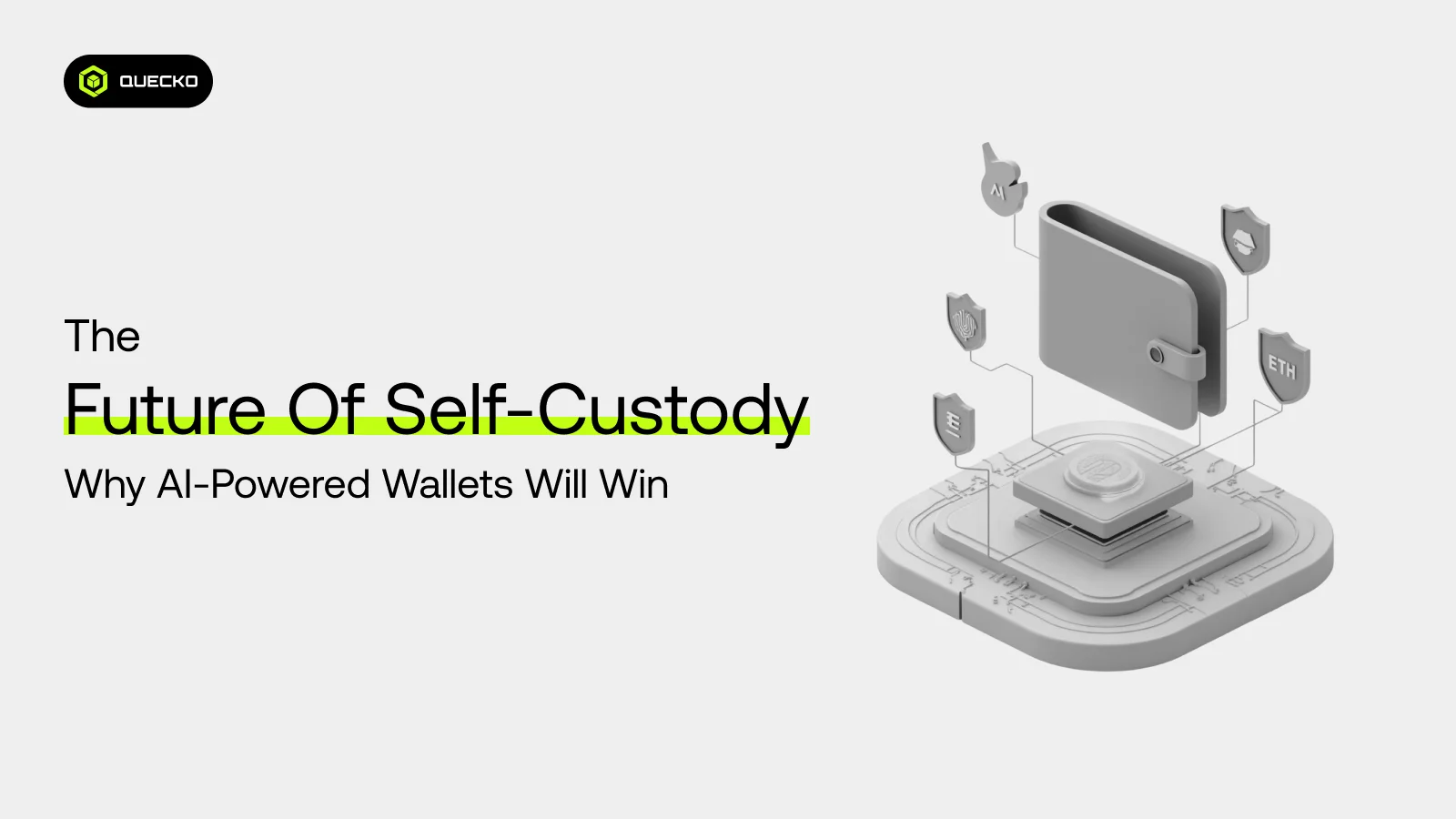Decentralized Identity Explained: Your Passport to the Future of the Internet
Explore how Decentralized Identity (DID) secures your digital identity with privacy and user control.

Technology has transformed our interaction, online shopping, and way of proving who we are over the Internet. Despite their best efforts, current systems for digital identities are too exposed to breaches, perform poorly in managing data, and strongly prioritize privacy invasion. This is when Decentralized Identity (DID) comes into play, offering people self-controlled identities so they can decide how their data is used on the internet.
DID utilizes blockchain and cryptographic proof, removing the role of centralized authorities and thus minimizing the risk of your data or identity being stolen. The paradigm promotes improved privacy, helps build trust, and ensures smooth interactions between different services internationally.
This blog will share a detailed guide to technology-independent media use to evolve the internet.
Understanding Digital Identity
A digital identity includes the information needed to show who someone is, what an organization represents, or what a device can do online. Information required here may consist of names, emails, social security numbers, biometric data, and blockchain wallet information. Most online environments today have databases where this data is held, and these databases are managed by central authorities or companies like banks, governments, and tech providers.
While convenient, this centralized model comes with major downsides:
- Susceptibility to identity theft and breaches
- Lack of user control over personal information
- Poor user experiences due to fragmented identity silos
These challenges have led to the emergence of decentralized identity solutions, where individuals own and manage their digital identities using blockchain technology and cryptographic methods.
What Is Decentralized Identity (DID)?
Decentralized Identity (DID) means the person in charge of their identity can manage their data. Rather than being stored centrally, identity data is protected using cryptographic proofs on a blockchain network, ensuring it remains trustworthy, secure, and private.
DIDs are unique, persistent identifiers generated and controlled by individuals without relying on a single entity. They form the foundation of decentralized identity systems, which consist of:
- Verifiable credentials
- Digital wallets
- Verifiable data registries
- Credential issuers
- Identity hubs
This architecture often uses W3C standards like W3C-DID, verifiable registry, and ERC-725 standard.
Self-Sovereign Identity (SSI): Taking Ownership of Your Data
At the heart of DID lies the concept of self-sovereign identity (SSI). SSI allows users to:
- Create and manage their own identities
- Store credentials in a digital identity wallet or a Web3 identity wallet
- Selectively share identity attributes with others
- Prove identity using a cryptographic proof and a zero-knowledge proof
This privacy-by-design approach enhances user confidence, gives rise to pseudonymous profiles, and enables selective disclosure of information, a vital feature in preserving privacy.
Key Components of a Decentralized Identity Ecosystem
A fully functional decentralized identity ecosystem consists of several core components:
1. Decentralized Identifiers (DIDs)
Special codes linked to a reliable public database like Ethereum, creating identifiers that can’t be altered and are controlled by the user. They empower people to build their own online identities, so no central authority is responsible, and their data is more secure.
2. Verifiable Credentials
Issued by credential issuers, these credentials can be stored in a digital wallet and presented for identity verification. For example, a university diploma stored digitally can be instantly verified by employers or institutions without intermediaries, reducing fraud and streamlining processes.
3. Blockchain Technology
Provides a tamper-resistant decentralized data registry, eliminating the need for a centralized authority. Popular platforms include Ethereum (with smart contracts) and others, enabling secure, transparent, and immutable recording of identity transactions and verifications across a distributed network.
4. Digital Wallets and User Agents
Wallets are like user helpers that make it easy to organize IDs, credentials, and permissions for users with a simple design. They allow users to securely keep verifiable credentials and control who gets to see which pieces of information.
5. Identity Hubs
Personal data repositories that provide identity record keeping, help establish trust between users, and support access management. They enable users to securely store, manage, and share their identity attributes across different services while maintaining privacy and control over their personal information.
Supporting Technologies
DID leverages various decentralized technologies:
- Blockchain network: An immutable base layer for storing DIDs.
- Smart contracts and smart contract wallets: Define permissions and actions.
- Cryptographic proof and Zero-Knowledge Proof: Enable data verification without revealing the data.
- ERC-725 standard, Ethereum Name Service (ENS), and Ethereum Universal Profile: Define identity structures and registries.
Decentralized Identity vs Centralized Models
a) Control and Ownership:
In centralized identity systems, the data of users is looked after by third parties like governments, businesses, or service companies, which makes it difficult for individuals to control their own information. Meanwhile, by using decentralized identity, users keep their own identity and can handle their data on their own, outside the control of major organizations.
b) Privacy and Data Sharing:
Centralized models often require users to share excessive personal information, increasing the risk of data misuse and exposure. Decentralized identity systems adopt a privacy-by-design approach, enabling selective disclosure, users can prove specific facts (e.g., age or citizenship) without revealing their full identity or additional details.
c) Security and Data Breaches:
Centralized databases are prime targets for hackers, with many high-profile breaches exposing millions of user records. Decentralized identity uses cryptographic proof and zero-knowledge proofs to validate data securely, without storing sensitive information in a central repository, thereby reducing attack surfaces.
d) Interoperability vs Silos:
Centralized systems often operate in isolation, creating identity silos that force users to manage multiple logins and profiles. Decentralized identity ecosystems are inherently interoperable, allowing a single digital wallet and verifiable credentials to be used across various platforms and services.
e) Trust and Verification:
In centralized systems, trust is placed in the authority managing the database. If compromised, user identities can be faked or stolen. Decentralized identity shifts trust to cryptographic mechanisms and distributed networks, where verification is done through verifiable data registries and credential issuers, enhancing transparency and integrity.
f) User Experience:
Adopting centralized platforms eases joining, yet it requires members to give up their privacy and lose some control over their information. While decentralized identity requires extra learning, it offers users better security and privacy control. Users can take care of their own identity using simple user interfaces and identity hubs, making them less dependent on third parties.
Why Do We Need Decentralized Identity?
The current centralized systems pose risks such as:
- Privacy breaches
- Poor onboarding user experience
- Over-reliance on central databases
- Inability to create a universal standard digital identity
DID provides several benefits:
- Enhanced privacy controls
- Greater user control and autonomy
- Resistance to censorship and breaches
- Interoperability across platforms
It also fosters trust between users, service providers, and credential issuers, leading to a more robust digital trust framework.
Real-World Applications
Decentralized Identity is already transforming various industries by providing secure, privacy-focused, and user-controlled identity solutions. From healthcare to finance, education to government services, DID is enabling more efficient and trustworthy interactions across the digital landscape.
1. Healthcare
Patients can control who accesses their health data, ensuring secure sharing of records. They can grant temporary, selective access to doctors or specialists without exposing their entire medical history. This reduces the risk of identity theft and enhances patient privacy in telemedicine and hospital systems.
2. Education
Verifiable credentials show academic credentials that cannot be tampered with and can be checked instantly. With their digital identity wallet, students can manage their certificates and share them as needed with employers and institutions directly. This helps the process go more smoothly and discourages attempts to use fake credentials
3. Finance
Getting users started with financial apps becomes simpler and safer, letting them enjoy banking with peace of mind. Thanks to decentralized identity, users can verify their identity instantly with help from verifiable credentials and avoid going through KYC repeatedly. This allows users to trust the platform and, at the same time, keep everything secure and compliant.
4. Social Media
With Web3 profiles, users gain control over their online presence, avoiding exploitation by platforms. Pseudonymous profiles allow individuals to interact freely while maintaining privacy. Users own their identity attributes and content, ensuring portability across platforms and preventing data misuse.
5. Government Services
From passports to driver’s licenses, digital credentials can modernize public sector services. Citizens can store these in a decentralized identity wallet, enabling instant verification without relying on a centralized database. This streamlines bureaucracy, enhances privacy, and reduces fraud in identity verification processes.
Privacy and User Control
Privacy is a core driver of DID adoption. Tools like zero-knowledge proof, privacy controls, and friendly user experience interfaces ensure that users disclose only what’s needed, nothing more. Rather than repeating the failures of Cambridge Analytica, DID ensures transparency, user confidence, and visibility of identity claims only when necessary. Users remain the sole identity owners, empowered to manage their data without surveillance or unauthorized exploitation.
This approach not only protects sensitive information but also builds trust in digital interactions by giving individuals clear oversight of who accesses their data and for what purpose. As a result, decentralized identity fosters a more ethical and user-centric internet ecosystem.
Trade-Offs and Challenges
Despite its promise, decentralized identity comes with challenges:
- Trade-offs between decentralization and usability
- Building a critical user base
- Creating a friendly user experience for non-technical users
- Aligning with regulations and cloud security posture management
Moreover, adoption requires collaboration between ecosystem components, including:
- Decentralized Identity Foundation
- Governments and regulators
- Enterprises and service providers
Ethereum and DID: A Powerful Pair
Ethereum is a leading platform for DID due to its:
- Support for smart contracts and smart contract wallets
- Identity-focused standards like the ERC-725 standard
- Projects like Ethereum Universal Profile and ENS (Ethereum Name Service)
These tools enable the creation of verifiable registries, chain interactions, and contract account abstraction, setting the stage for truly decentralized identity systems.
Future Outlook
We are witnessing the dawn of a digital revolution. Projects by institutions like Keio University, Tokyo, and initiatives based on the ion method are helping to define primary approaches and foundational elements of DIDs.
With increasing adoption, we will see: Replacement of email addresses with blockchain addresses
- Transition from identity silos to interoperable identity hubs
- Growing use of selective disclosure and zero-knowledge proof for privacy controls
The evolution of DID technology is aligning with innovations in artificial intelligence, decentralized identity management, and decentralized identity parties to shape the internet of the future.
Conclusion
Decentralized Identity (DID) brings a different perspective to the way we think about our digital identity. DID is embracing decentralized systems, empowering people with their identity keys and making use of blockchain technology, which is making it a true pioneer in the future of the internet. It will likely make privacy safer, lessen the risk of identity theft, and foster stronger trust. If more sectors and authorities implement decentralized identity systems, people should have a safer and more convenient digital life.
With the development and maturity of infrastructure and new standards, DID will greatly influence secure, respectful, and inclusive experiences in digital life. The future of identity is not controlled by a central source, and it is much closer to us than we realize.
Date
2 months agoShare on
Related Blogs

How AI & Smart Contracts Create Personalized User Experiences
3 days ago

Blockchain for Government & Regulation: From Hype to Utility
4 days ago

Tokenizing Real-World Assets (RWA): Legal and Technical Challenges
9 days ago

The Future of Self-Custody: Why AI-Powered Wallets Will Win
10 days ago








